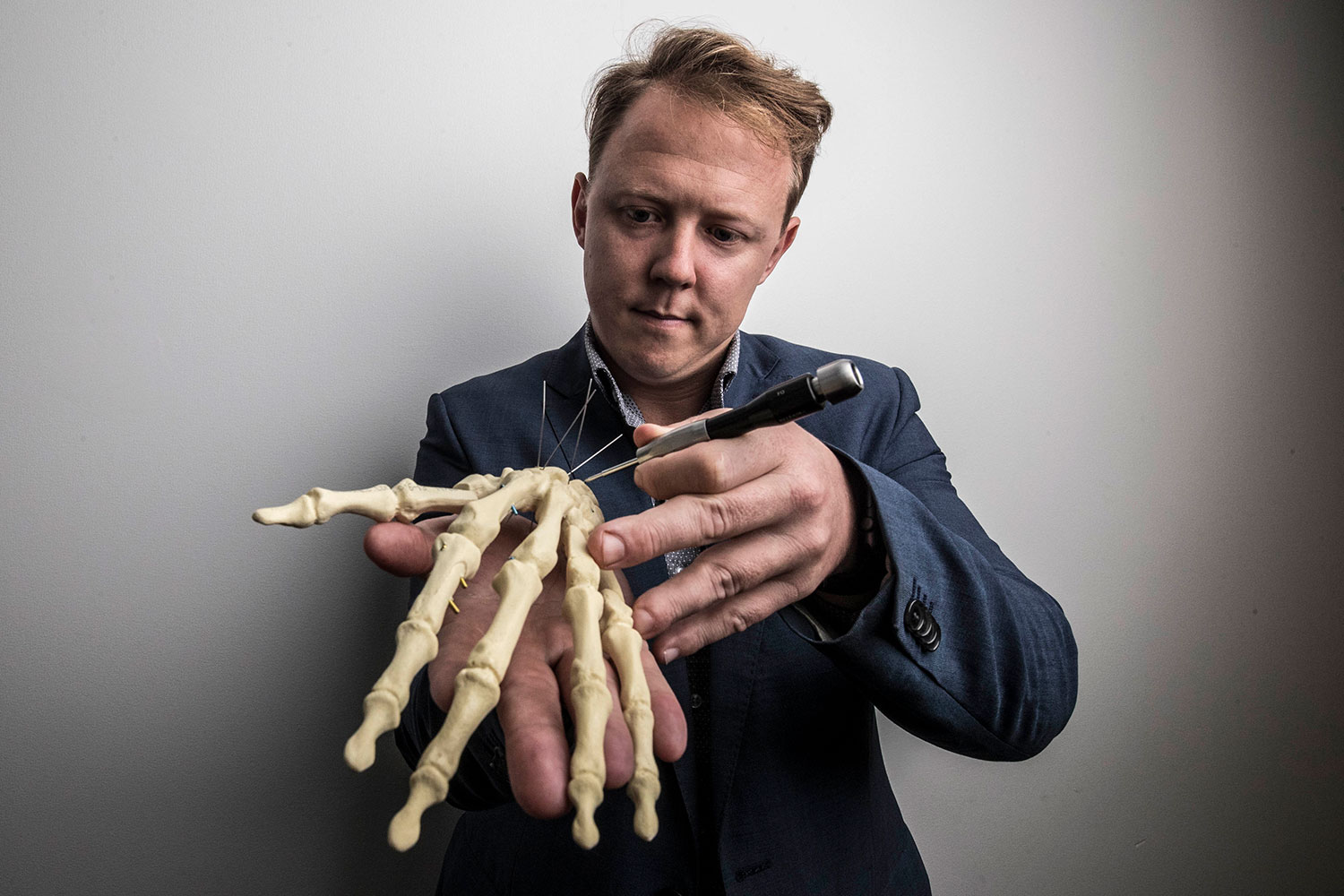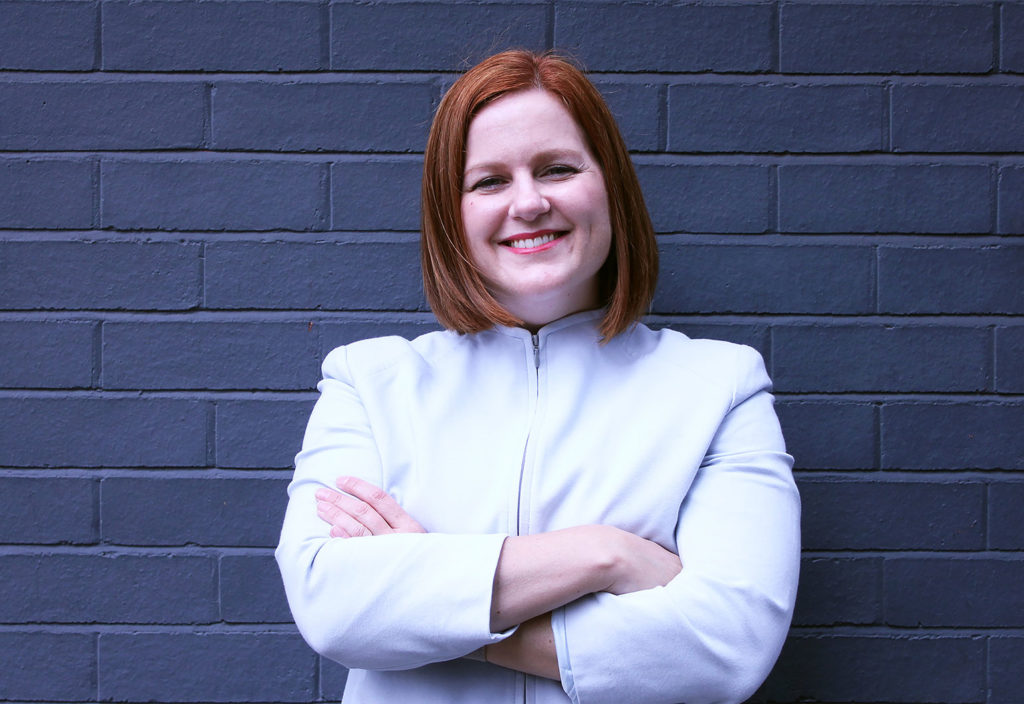Kelly Coverdale is advancing Australia’s biomedical industry at a leading innovator – and supporting the next generation of engineering in the process.
A long-time concern of Kelly Coverdale’s is that her professional discipline, medical engineering, sees a significant number of new graduates a year, but only has so many jobs to go around.
Following the Australian Biomedical Engineering conference last year — for which she was on the organising committee — she was passing the time with Dr Chris Jeffery, the wunderkind inventor, entrepreneur, biomedical engineer and surgeon who is CEO of medical device company Field Orthopaedics. Both were waiting for flights home from Sydney.
“Chris asked me a few questions; it was almost like a very short interview,” Coverdale told create.
She was offered a Chief Technology Officer role with the company a couple of weeks later.

“One of the things that [Jeffery] is very keen to do is ensure that we get more products to the market as soon as possible, so bringing on someone like me who has the experience, capability, to lead the team in order to do that is why I think from a timing perspective it all worked out quite well,” she said.
The role made perfect sense: overseeing research and development (R&D) at a highly promising medical innovator, growing its range of products, and helping create opportunities for Australian biomedical engineers.
Developing the future
Coverdale’s career began as a clinical engineer at Greenslopes Private Hospital. She quickly moved on to managing the biomedical engineering department, then became an R&D engineer and, later, a team leader for aortic intervention devices at Cook Medical Australia.
Her return to R&D work follows a role at Health Support Queensland that had a focus on asset management.
Coverdale has been a part of several professional and advisory committees, including Engineers Australia’s National Committee of Clinical Engineering and its Biomedical College Board, as well as Queensland University of Technology’s (QUT) Engineering Course Advisory Committee.
“Following that redesign [of QUT’s engineering courses], we changed the committee to incorporate not just industry members, but [also] engage the academic staff that are in charge of curriculum and the students as well … ensuring that our engineering students are actually getting something that is quite relevant to the industry during their course,” Coverdale said.
“One of the reasons why I engaged so much in industry groups is that we produce a significant number of medical engineering graduates in Australia and we really don’t have a significant industry to support them in jobs in research and development.
“There is a huge focus on ensuring that support [for students] is achieved, and then supporting the growth of the company at the same time at the other end, so there are a lot of things about Field that aligned with my professional values.”
Growth strategy
The team is a mix of paid employees and interns. Coverdale said that the gender balance is slightly below 50-50 but that would most likely change through the internship program.
Interns are working on projects that “will become priority projects in our design and development pipeline,” she said.
These could be work experience or final-year capstone projects and will transition into employment after graduation.
Coverdale said sustaining the company’s growth means continuing a focus on meaningful innovation, guided by deep links with the surgeon community.
Field co-founder Dr Greg Couzens, for example, is on-site once a week to give clinical input to the company’s engineers.
“Often startups will eventuate from an idea — it might be someone’s PhD or someone has come up with what they think is a brilliant idea — but the challenge often is that the idea in its own right isn’t necessarily what is needed in the market,” explained Coverdale.
“We aren’t focused on ideas; we’re focused on providing solutions to problems and ensuring that we are working directly with surgeons and physicians in this field, understanding what they need and what is deficient in the market, from their perspective and going from there and developing new ideas and solutions from that point.
“Which is really how engineers should work and how they work their best.”
Down to the bones
Field Orthopaedics has generated plenty of interest from the surgical community and elsewhere.
Founded in 2016, it has already grown to be worth more than $100 million, earning various awards and write-ups from the popular press along the way. Mid-last year, the company also received the green light from the Food and Drug Administration (FDA) in the US for its Micro Screw.
It was started by Jeffery with Brisbane orthopaedic surgeons Dr Greg Couzens and Dr Libby Anderson.
Field’s first innovation to gain regulatory approval, the Micro Screw, was successfully used in surgery this past January, and the company has been inundated with orders for kits.
Coverdale has joined at a time in which there are 10 other products in development, including a novel bone cement with drug-eluding particles, a specialised drill, a bone linker and shoulder-joint repair kits.
“We are just trying to fill the portfolio for extremity orthopaedic surgeon and upper extremity area,” she said.
“We need to establish ourselves now as an extremity orthopaedics company, and to do that you need more than one device on the market.”
